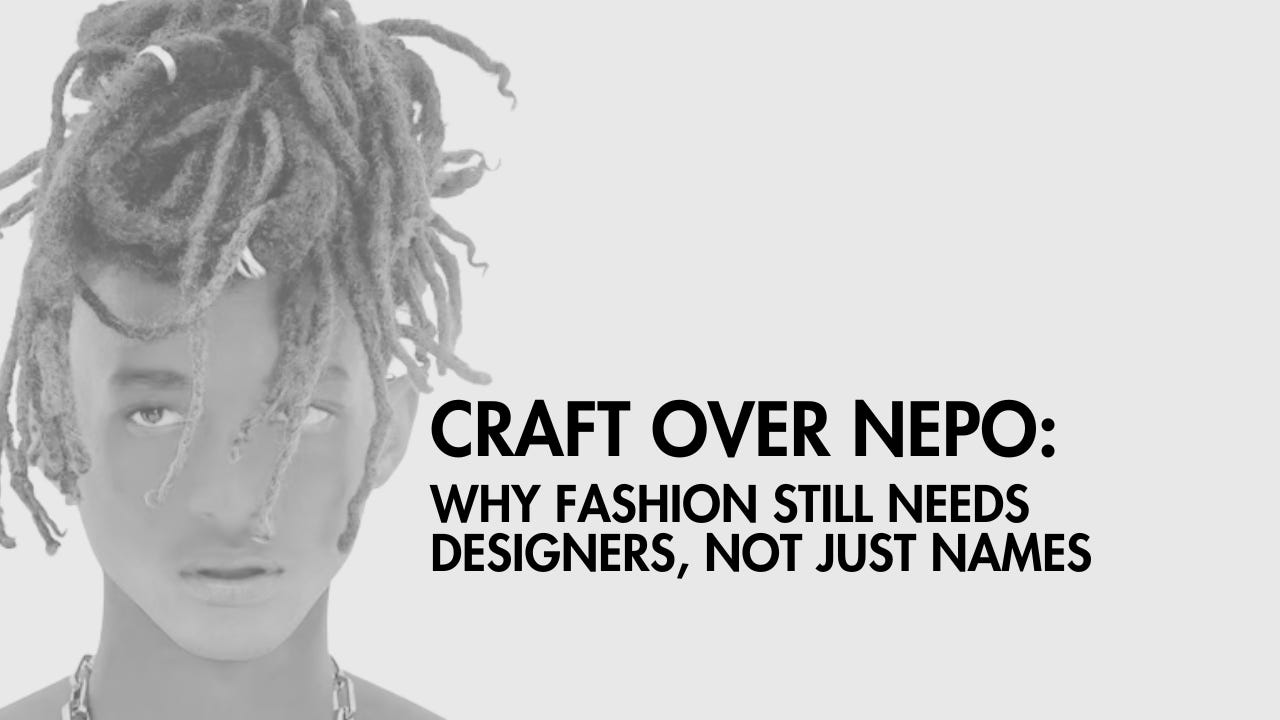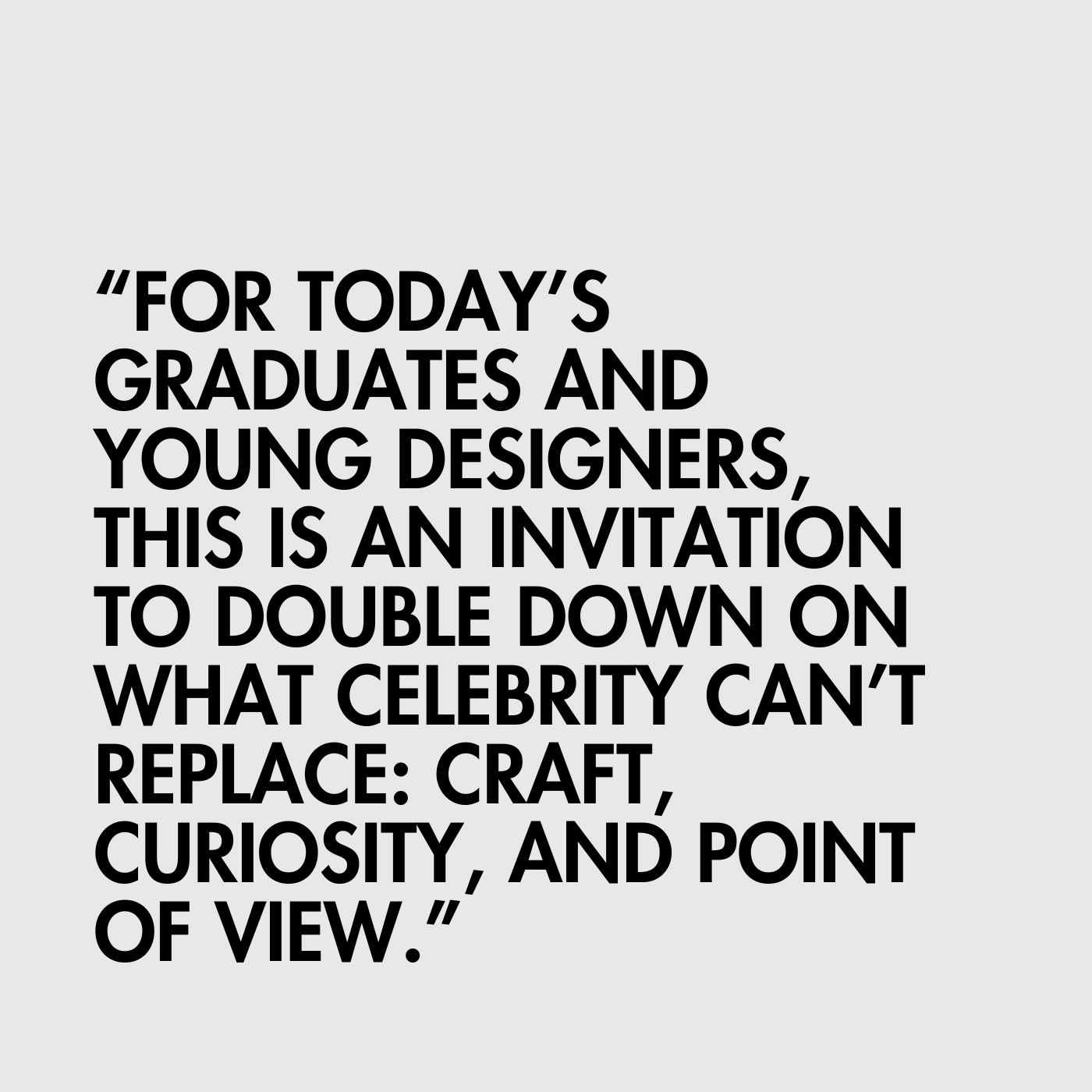Craft over Nepo: Why Fashion Still Needs Designers, Not Just Names
The recent appointment of Jaden Smith as Creative Director for Louboutin’s men’s line has once again sparked conversation about how fashion chooses its creative voices, and the role of celebrity and lineage in design.
For some, it’s a sign of fashion’s ongoing shift towards storytelling and influence; The appointment of a celebrity or a famous offspring guarantees headlines, engagement, and a short-term boost in cultural relevance. These are talented, creative individuals whose influence across art, music, and culture is undeniable, but their success also reflects a broader reality of our time, that visibility and cultural reach often weigh as heavily as experience and craft. For others, it raises the question of what space remains for the next generation of trained designers.
The industry has always thrived on personality and story. But the balance seems to be shifting. In today’s attention economy, fame has become the new form of credibility. The logic is commercial, not creative. A global audience recognises a Jaden Smith or a Pharrell instantly; their appointment sells a lifestyle before a single sketch exists.
The “nepo baby” and celebrity designer phenomenon has become shorthand for a generation of instant creatives, individuals handed creative director titles or capsule collections not through craft, but through connection. Yet, as we celebrate these cultural icons, we also must ask: what space is left for those still learning to build their own language?
Perhaps there’s another way to look at it.
Rather than seeing this as a threat to emerging talent, we might see it as a moment to redefine what creativity in fashion truly means. The industry has always evolved through cultural currents, from couture to streetwear, from ateliers to algorithms. Each era challenges the next to adapt, to sharpen its voice, and to rediscover its essence.
For today’s graduates and young designers, this moment is an invitation to double down on what celebrity can’t replace: craft, curiosity, and point of view. These are qualities that can’t be inherited or performed. They’re built through process, reflection, and perseverance.
Every year, I see graduates emerging from fashion schools who remind me that design is still about discovery, with ideas rooted in connecting research with intuition, experimentation, and identity with innovation. They work quietly, shaping narratives around sustainability, heritage, and culture. They may not have millions of followers, but they have ideas that resonate deeply with the times we live in. Their collections don’t just dress the body; they express who we are, and who we’re becoming.
This is not a criticism of celebrity or heritage, nor does fashion need to reject celebrity. It needs to rebalance it. To remember that the runway began as a space for ideas, not influence. Behind every movement in fashion history, from couture to counterculture, stood designers who built their language stitch by stitch, not post by post.
The visibility of figures like Jaden or Pharrell reflects fashion’s fascination with storytelling, but it also opens a new conversation about where stories begin. For graduates, it’s not a reason to feel excluded, but a call to claim their space differently: through substance, originality, and integrity.
Fashion will always need spectacle, but it also needs sincerity. It needs those who can turn research into narrative and vision into form. The next chapter of the industry won’t belong only to names we already know; it will be written by those who keep creating, learning, and questioning what comes next.
Perhaps that’s what makes fashion still exciting, that its future remains open to those who approach it with purpose, humility, and imagination.
Because in the long run, fame fades, but craftsmanship endures.




